Salmon is a versatile and delicious seafood choice that has gained significant popularity among health-conscious individuals and food enthusiasts. Its impressive nutritional profile, boasting high omega-3 fatty acids and lean protein levels, often earns it a regular spot on dinner plates. However, determining the appropriate baking time for fish can be daunting for many home cooks, with concerns of dry, overcooked fillets that lack flavor and moisture. With this guide, we set out to answer the question: How long to bake salmon at 425 degrees Fahrenheit? By providing clear instructions and helpful tips for a perfectly cooked, tender, and flavorful salmon dish every time, you’ll soon master the art of baking this nutritious and delectable fish in your oven.
So, strap on your apron and preheat your oven as we dive into the specifics of creating a juicy, mouthwatering salmon entree that will delight your taste buds and impress your dinner guests.
The Reason to Bake Salmon At 425
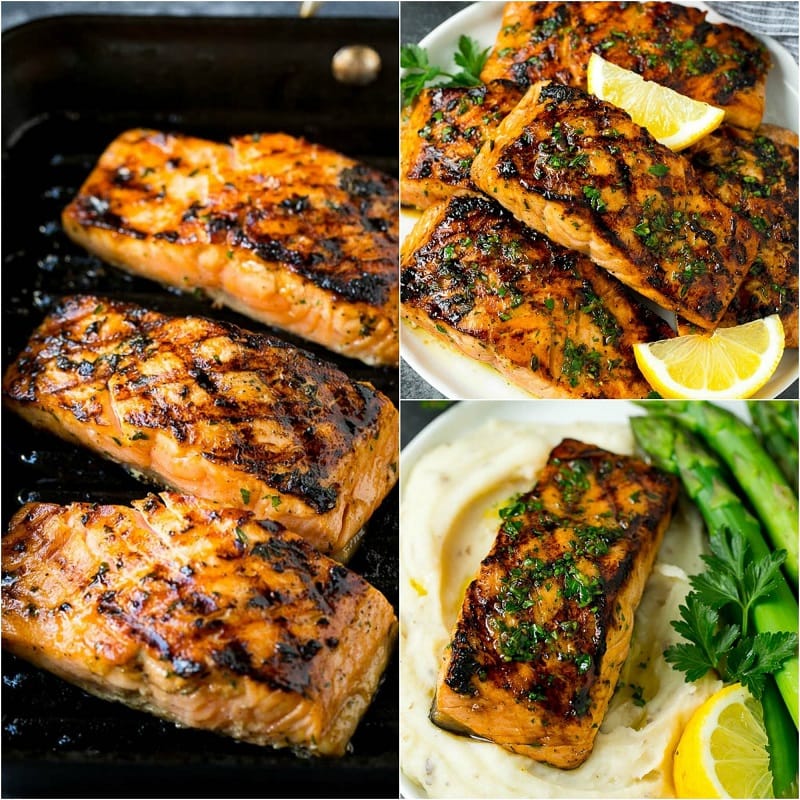
First and foremost, baking salmon at a high temperature, like 425 degrees Fahrenheit, ensures that the fish is cooked without overcooking it. When you cook salmon at a lower temperature, it can take longer for the fish to cook all the way through, resulting in overcooked, dry salmon.
Additionally, baking salmon at 425 degrees Fahrenheit gives it a nice crispy exterior while keeping the inside moist and tender. This is because the high temperature causes the sugars in the salmon to caramelize, resulting in a deliciously crispy exterior.
Another reason to bake salmon at 425 degrees Fahrenheit is that it’s a quick and easy way to cook salmon. Depending on the thickness of your salmon fillet, it can take anywhere from 12-20 minutes to bake at 425 degrees Fahrenheit. This means you can have a healthy and delicious dinner in no time.
Finally, baking salmon at 425 degrees Fahrenheit allows you to experiment with different seasonings and flavors. Whether you prefer a simple salt and pepper seasoning or something more complex like a honey mustard glaze, baking salmon at a high temperature will help to bring out the flavors of your chosen seasonings.
How Long To Bake Salmon At 425?
It’s recommended to cook salmon for 10-12 minutes per inch of thickness at 425 Fahrenheit, as it allows for a perfectly baked salmon that’s moist and flaky. For a 6-ounce fillet, you can generally expect to bake it for just 12-15 minutes.
However, it’s essential to keep an eye on your salmon as it cooks and be sure not to overdo it, as this can cause it to dry out. With a little monitoring and attention, you can create a delicious and healthy dish that’s sure to impress.
How Long To Bake Salmon At 425 In Foil?
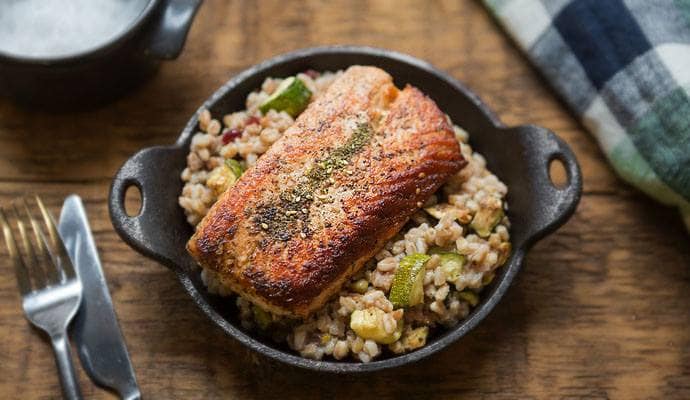
When cooking salmon, knowing how long to bake it and at what temperature can be tricky. Baking salmon at 425 degrees Fahrenheit in foil is a great way to ensure moist and flavorful results. Ideally, the salmon should be wrapped tightly in foil and baked for 20 minutes or until it pulls apart easily with a fork. With this information, anyone can confidently bake salmon at 425 in foil for a delicious and healthy meal.
How Long To Bake Salmon At 425 Without Foil?
When it comes to baking salmon at 425 degrees without foil, the ideal cooking time varies based on the thickness of the fish. Generally, it is recommended to bake a 1-inch thick salmon fillet for about 12-15 minutes to achieve a perfect flaky but moist texture. For thinner fillets, 10-12 minutes in the preheated oven at 425°F is sufficient.
However, it is important to keep an eye out and avoid overcooking, as this can result in dry and tough salmon. The high temperature ensures the skin becomes crispy, adding a delightful contrast to the tender flesh.
Read more:
- How Long Does Cooked Salmon Last In The Fridge
- How Long To Bake Salmon At 400
- How Long to Bake Salmon at 350
How Long To Bake Salmon At 425 In Parchment Paper?
When cooking salmon, many options exist for a delicious and perfectly cooked dish. One great method is baking it on parchment paper at 425 degrees Fahrenheit. To do so, first, preheat the oven to the desired temperature. Then, place the salmon fillet on a sheet of parchment paper and brush it with oil and seasonings. Bake for 10-12 minutes per inch of thickness or until the fish is cooked through and flaky.
It’s important to note that cooking times may vary depending on the size and thickness of the fillet, so be sure to check on it periodically. However, baking fish on parchment paper is a great way to keep it moist and flavorful, making for a delicious and healthy meal.
How Long To Bake Salmon At 425 From Frozen?
It should take around 12 to 18 minutes to cook frozen salmon fillets in a preheated oven at this temperature. The frozen salmon can be rinsed to remove ice crystals and placed in a single layer on a baking sheet lined with foil or parchment paper. The salmon should be baked, covered for 15 minutes, and uncovered for 8 to 10 minutes or until the desired temperature.
How Long To Bake Salmon Patties At 425 Degrees Fahrenheit?
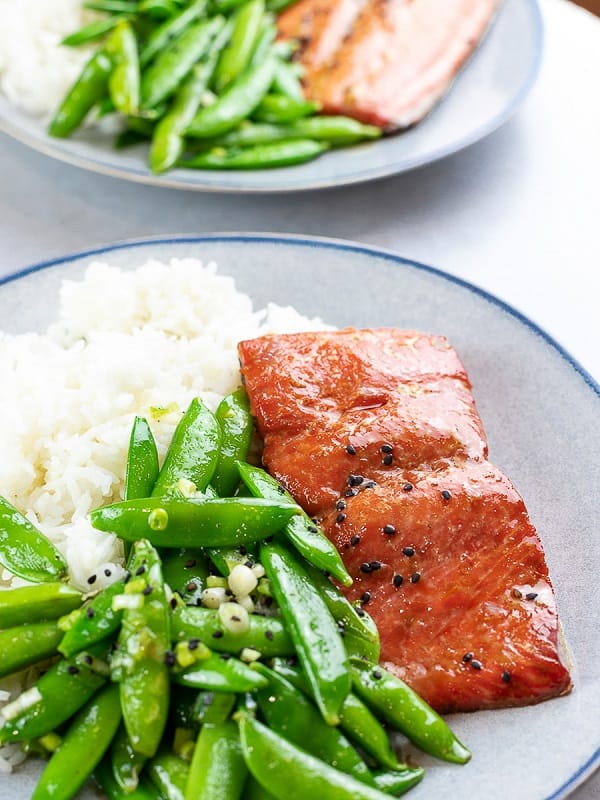
If you’re wondering how long it takes to bake salmon patties at 425 degrees Fahrenheit, the answer is around 20 minutes. However, it’s essential to keep an eye on them and flip them once halfway through to ensure they cook evenly and turn crispy and golden brown on both sides.
Salmon patties are a delicious and healthy dish that can be served as a main course or as a tasty addition to salads or sandwiches. To prepare them, line a baking sheet with parchment paper, place the salmon patties on top, and bake for the recommended time. Serving them with lemon slices and a side of sauce is a great way to enhance their flavors and add a touch of freshness to the dish. Baking salmon patties at 425 degrees Fahrenheit is an easy and convenient way to enjoy this tasty seafood treat.
How Long To Bake Salmon Burgers At 425?
If someone wants to make some delicious salmon burgers, baking them in the oven is a great way. At a temperature of 425 degrees Fahrenheit, the salmon burgers will take around 20 minutes to cook fully. Flipping the burgers after 10 minutes is recommended to ensure they are cooked evenly on both sides.
Once they are finished, the salmon burgers can be topped with desired toppings, such as lettuce or tartar sauce, and served on buns. Baking salmon burgers in the oven is a simple and easy way to make a tasty and healthy meal.
How Long To Bake Stuffed Salmon At 425 Degrees Fahrenheit?
The answer to that question will depend on a few factors. The size and thickness of your salmon filet and the type of stuffing can affect the cooking time.
As a general rule of thumb, you should plan to bake your stuffed salmon for around 20-25 minutes. This should be enough time to cook the salmon without overcooking it. However, it’s always a good idea to check on your salmon periodically to make sure it’s cooking evenly.
Another thing to keep in mind when baking stuffed salmon is that the stuffing may cook faster than the salmon itself. If this happens, you can cover the salmon with foil to prevent the stuffing from burning.
How Long Do You Cook Salmon At 425 In The Microwave?
To cook salmon perfectly in the microwave, one should aim for a 6-8 minute cooking time. However, the cooking time will also depend on the thickness of the fillet. It is recommended to cook salmon fillets for 10-12 minutes per inch of thickness at this temperature.
One must also ensure that the salmon is cooked through and can be easily flaked. The microwaved salmon should rest for a few minutes before being served to lock in its juices. With these tips, one can enjoy a delicious and healthy microwaved salmon dish in just a matter of minutes.
How Long Do You Bake Salmon At 425 In An Air Fryer?
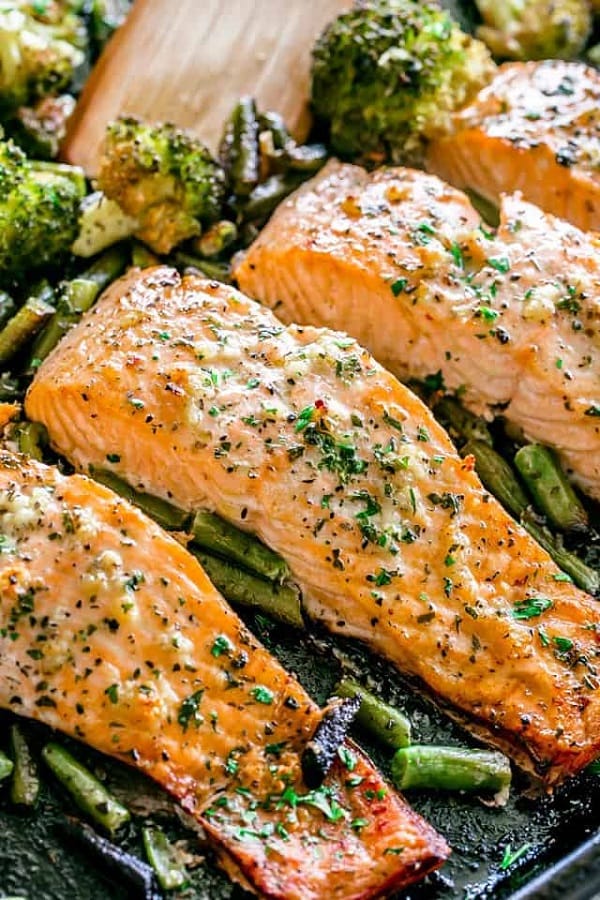
If using an oven air fryer, the salmon should be cooked for 15 minutes at 400 degrees Fahrenheit. However, if using a basket air fryer, the cooking time can range from 6 to 11 minutes at 425 degrees Fahrenheit, depending on the thickness of the salmon fillets. The ideal cooking time for salmon is about 5 minutes per side at 425 degrees Fahrenheit. Plan roasting at 425 degrees Fahrenheit for thicker fillets for about 20 to 25 minutes.
How To Make Salmon At 425 Degrees Fahrenheit?
One should follow simple steps to make delicious and moist salmon at 425 degrees Fahrenheit.
- Firstly, preheat the oven to 425°F.
- Once the oven has reached the desired temperature, take a salmon fillet and place it on a baking sheet lined with parchment paper, making sure to season it with some salt and pepper.
- Then, bake the salmon for 6 to 8 minutes, depending on its thickness. Generally, one should bake salmon for 10 to 12 minutes per inch of thickness at 425°F to get perfectly baked salmon that is moist and flaky.
Keep in mind that the maximum temperature for cooking the fish should be 140 degrees F. The exact cooking time may vary depending on the oven, but one can check for doneness by inserting a fork into the thickest part of the fish. If it flakes easily, it is ready. Once the salmon is done, take it out of the oven, serve it hot with lemon wedges, and garnish it with fresh herbs.
Is 425 Too High For Salmon?
No, 425 degrees Fahrenheit is not too high for baking salmon. It is often considered the “Goldilocks” temperature – not too hot or cool. However, the exact cooking time may vary depending on the oven. At this temperature, salmon can come out perfectly moist and flaky with a golden color and crispy skin.
It is important to keep an eye on the cooking time and make necessary adjustments based on the thickness of the fillets. When done correctly, baking salmon at 425°F ensures a crunchy top with a moist and tender inside. The FDA considers salmon cooked when the thickest part reaches 145 degrees F.
How Many Calories And Nutrients Are There In One Serving Of Baked Salmon Made At 425 Degrees?
A 3-ounce serving of cooked salmon made at 425 degrees contains about 150 calories, which is not a lot for a meal. However, it provides a significant amount of protein (15-20 grams) and omega-3 fatty acids (7-9 grams) that offer plenty of health benefits.
Baked salmon is also a versatile main dish that can be served with various sides to make it even more nutritious. This dish is worth trying for those who want a fast, healthy, and delicious meal.
What Is The Best Way To Season Salmon Before Baking It In The Oven At High Heat?
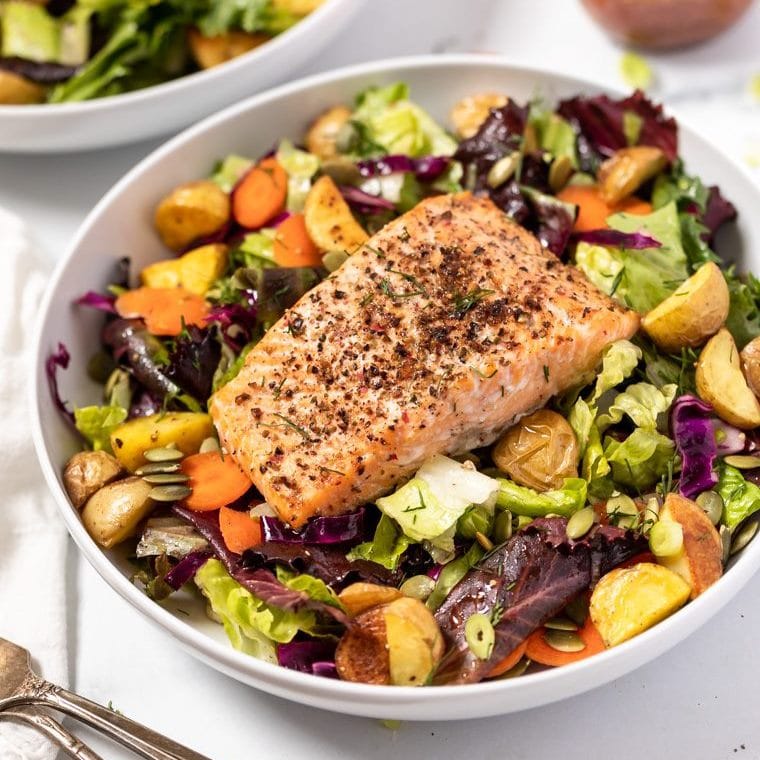
The best way to season salmon before baking it in the oven depends on personal preference, but some common seasonings work well.
- Adding a combination of salt, pepper, and paprika or Cajun seasoning is a great way to add a touch of spice and enhance the natural flavors of the salmon.
- Italian seasoning, garlic powder, brown sugar, and a squeeze of lemon juice are also popular options.
Let the salmon marinate in the seasoning for at least 30 minutes before baking it in the oven at 425 degrees Fahrenheit. This will ensure the salmon is perfectly cooked with a crispy exterior and tender interior.
Seasoning the salmon before baking it in the oven is a simple yet effective way to elevate this healthy and delicious dish.
How Can You Tell When Salmon Is Cooked Through As Opposed To Overcooked?
I often find myself asking the question: how can I tell when salmon is cooked through as opposed to overcooked? It’s a common question and one that can be tricky to answer. But with some knowledge and practice, you’ll be able to cook your salmon to perfection every time.
First, you must understand that there are different types of salmon, and each type requires a slightly different cooking approach. For example, sockeye salmon is leaner than other types of salmon, so it can dry out quickly if overcooked. Coho salmon, on the other hand, has more fat and can handle a longer cooking time.
No matter what type of salmon you’re cooking, the most important thing to keep in mind is that you don’t want to overcook it. Overcooked salmon can be dry, tough, and unappetizing. So how do you know when it’s done?
One way to test for doneness is to use a meat thermometer. The USDA recommends cooking salmon to an internal temperature of 145°F. Insert the thermometer into the thickest part of the salmon and check the temperature. If it reads 145°F, your salmon is cooked and safe to eat.
Another way to test for doneness is to use the “flake” method. Gently press down on the salmon with a fork. If the flesh flakes easily and is opaque all the way through, it’s cooked through. If it still looks translucent in the middle, it needs more time.
A third method is the “color” method. Salmon cooks from the outside, so you can tell when it’s done by looking at the color. When the salmon is raw, it’s bright orange or pink. As it cooks, the color will change to light pink or white. When the salmon is fully cooked, it will be opaque and light pink throughout.
What To Serve With Bake Salmon At 425?
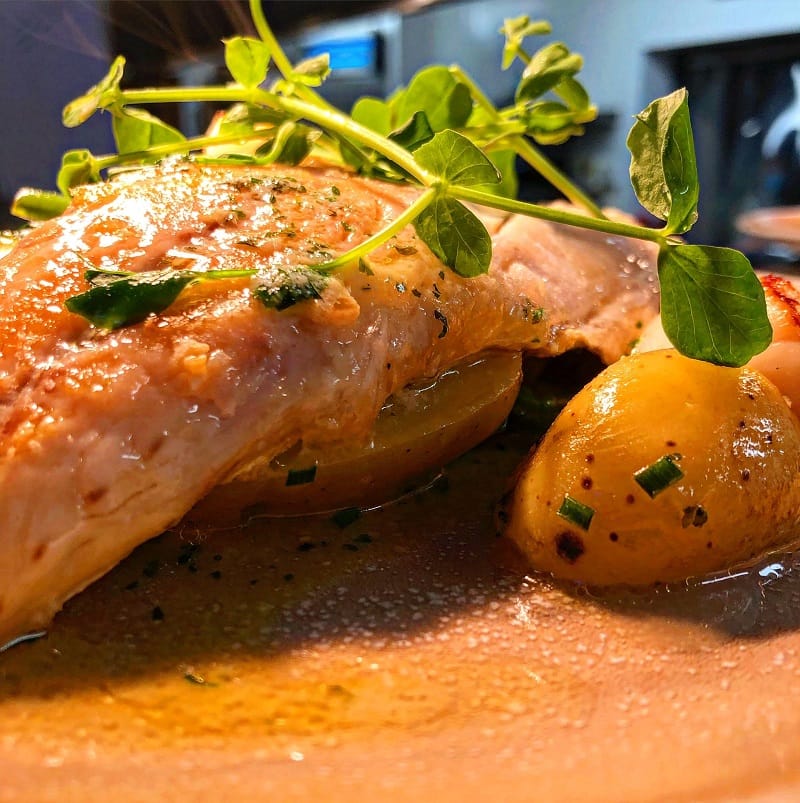
After all, while salmon is delicious on its own, it’s always nice to have some complementary side dishes to round out the meal. I’ve found that a few dishes pair particularly well with baked salmon at 425 degrees. Here are my top recommendations:
- Roasted Vegetables: There’s something about the caramelized sweetness of roasted vegetables that pairs perfectly with the savory, slightly smoky flavor of baked salmon. I like to roast a mix of whatever veggies are in season – right now, that means carrots, Brussels sprouts, and sweet potatoes – with a little olive oil, salt, and pepper. The result is a colorful, nutrient-packed side dish that’s both satisfying and delicious.
- Grilled Asparagus: If you’re looking for a simple, fuss-free side dish, you can’t go wrong with grilled asparagus. Toss the asparagus with olive oil, salt, and pepper, then grill for a few minutes on each side until tender and slightly charred. The smoky, slightly bitter flavor of the asparagus is the perfect complement to the rich flavor of the salmon.
- Quinoa Salad: For a lighter, fresher side dish, I like to make a simple quinoa salad with lots of fresh herbs, chopped veggies, and a tangy vinaigrette. The nutty flavor of the quinoa pairs well with the salmon, while the crisp veggies and bright dressing add a refreshing contrast.
- Mashed Sweet Potatoes: If you want something more indulgent, try serving your salmon with mashed sweet potatoes. The sweetness of the potatoes is a perfect match for the salmon’s smoky flavor, while the creamy texture of the mash adds a comforting touch.
Of course, these are just a few of my favorite side dishes to serve with baked salmon at 425 degrees – feel free to get creative and experiment with your flavor combinations.
How Should You Store Leftover Baked Salmon, And How Long Is It Safe To Eat?
When it comes to leftover baked salmon, it’s important to store it properly to ensure it stays safe to eat. According to the USDA, cooked salmon leftovers should be eaten within three to four days.
To store it, the salmon should be transferred to an airtight container or wrapped securely in plastic before being placed in the fridge. If stored properly, cooked salmon can stay up to a week safely in the fridge, but consuming it within 3-4 days is recommended for the freshest taste.
However, if you notice signs that the cooked salmon has gone bad, such as an unpleasant odor or slimy texture, it’s best to err on caution and throw it out.
What Are Some Tips For Keeping Salmon Fillets Moist And Tender When Baking Them In The Oven?
One of the biggest challenges is keeping the salmon fillets moist and tender during baking. After some trial and error, I’ve discovered a few tips that consistently yield perfectly cooked salmon. Here are my top tips for keeping salmon fillets moist and tender when baking them in the oven:
- Choose the right type of salmon: When selecting salmon fillets for baking; it’s important to choose the right type of salmon. Look for a fillet that is firm to the touch and has a vibrant pink color. Coho and sockeye salmon are two great options for baking, as they have a high-fat content that keeps the flesh moist and flavorful.
- Use a marinade: Marinating salmon before baking can help keep the flesh moist and tender. A simple marinade made from olive oil, lemon juice, garlic, and herbs is a great option. Let the salmon marinate in the fridge for at least 30 minutes before baking.
- Don’t overcook: Overcooked salmon is dry and tough, so keeping a close eye on the fish while baking is important. A good rule of thumb is to bake salmon at 375°F for 12-15 minutes per inch of thickness. To check if the salmon is done, use a fork to pull apart a section of the flesh gently. If the flesh flakes easily and is opaque throughout, it’s done.
- Use a baking dish with a lid: Baking salmon in a covered dish can help trap moisture and prevent the fish from drying out. If you don’t have a lid for your baking dish, use aluminum foil to cover it tightly.
- Add some liquid: Adding a small amount to the baking dish can also help keep the salmon moist. You can use water, white wine, or chicken broth. Pour about 1/4 cup of liquid into the dish before baking.
What Seasonings And Herbs Pair Well With Baked Salmon To Enhance Its Flavor And Aroma?
Baking salmon at 425 degrees gives it a crispy exterior while keeping the flesh moist and tender. However, the right combination of seasonings and herbs can take the flavor to the next level. I will share my go-to seasonings and herbs that pair well with baked salmon.
First on my list is garlic. Garlic adds a bold and pungent flavor to salmon, complementing its natural richness. I like to mince fresh garlic cloves and mix them with olive oil to create a paste. Then, I spread the paste on top of the salmon before baking it in the oven. The result is a deliciously fragrant and irresistibly flavorful baked salmon.
Next up is lemon juice. Lemon juice adds a bright and tangy flavor to the salmon. It also helps to cut through the richness of the fish. I like to sprinkle fresh lemon juice over the salmon before baking it. Alternatively, mix lemon juice with melted butter and brush it over the salmon for a richer flavor.
Dill is another herb that pairs well with salmon. Its delicate and slightly sweet flavor complements the richness of the fish. I like to sprinkle fresh dill over the salmon, mix it with olive oil, and brush it over the fish before baking it.
Rosemary is another herb that adds a unique and robust flavor to salmon. Its earthy and piney flavor pairs well with the richness of the fish. I like to crush fresh rosemary leaves and mix them with olive oil to create a paste. Then, I spread the paste over the salmon before baking it in the oven.
Last but not least is smoked paprika. Smoked paprika adds a smoky and slightly sweet flavor to the salmon. It also gives the fish a lovely golden color. I like to sprinkle smoked paprika over the salmon before baking it. Alternatively, mix smoked paprika with olive oil or melted butter and brush it over the salmon for a richer flavor.
Common Mistakes To Avoid When Baking Salmon At 425 Degrees
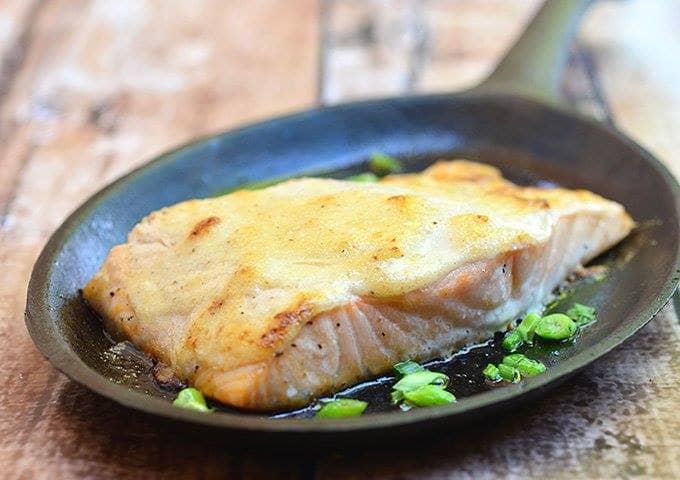
When cooking salmon at 425 degrees, I’ve made my fair share of mistakes. While I love this fish’s taste and health benefits, it can be tricky to get it just right. If you’re planning to cook salmon at this temperature, there are a few things you should keep in mind to avoid any mishaps.
Mistake #1: Not Preheating the Oven
I can’t stress enough how important it is to preheat your oven before baking salmon at 425 degrees. Putting your salmon in the oven won’t cook evenly while it’s heating up. This means some parts of the salmon will be overcooked while others will be undercooked. To avoid this, preheat your oven to 425 degrees for at least 10 minutes before putting your salmon in.
Mistake #2: Overcooking the Salmon
When it comes to cooking salmon, less is often more. Overcooking can lead to dry, tough fish that’s not appetizing. When baking salmon at 425 degrees, keep an eye on it, and don’t leave it in the oven for too long. Depending on the thickness of your fish, it should take around 12-15 minutes to cook at this temperature.
Mistake #3: Not Using Enough Seasoning
Salmon is a flavorful fish but can still benefit from extra seasoning. When baking salmon at 425 degrees, season it generously with salt, pepper, and other herbs or spices. This will help enhance the fish’s natural flavors and make it even more delicious.
Mistake #4: Using a Dull Knife to Cut the Salmon
After cooking your salmon, it’s important to use a sharp knife to cut it. If you use a dull knife, you might end up tearing the fish apart instead of getting clean, even slices. This can make your salmon look less appetizing and be harder to eat. So take the time to sharpen your knife before cutting into your perfectly baked salmon.
FAQs
What Is The Optimal Temperature For Baking Salmon For A Perfectly Flaky And Moist Consistency?
When it comes to baking salmon, the optimal temperature for a perfectly flaky and moist consistency varies depending on the thickness of the fillet. According to the FDA, salmon is cooked when the thickest part reaches 145 degrees F.
However, to achieve the ideal texture, a moderate temperature between 350°F and 400°F is recommended. For a 1″ thick piece, about 12-14 minutes of baking time in a 425°F oven is perfect.
The key to moist, flaky salmon is not to overcook it. It’s essential to check the internal temperature and remove the fillet from the oven once it reaches 135 to 140 degrees F. Seasoning with salt and pepper before baking enhances the flavor of the fish. Following these guidelines, you can enjoy a delicious and perfectly baked salmon every time.
Can You Overcook Salmon?
Overcooking salmon can have a negative impact on its texture and flavor. Overcooking salmon can make it dry, tough, and unappetizing. While undercooked salmon can also be dangerous, overcooked salmon is safe.
It is important to cook salmon to the right amount of doneness to enjoy its flavor and texture fully. Using a cake tester or relying on visual cues makes it possible to determine when salmon is perfectly cooked. So be careful not to overcook your salmon, and enjoy this tasty fish in all its glory!
Can You Bake Salmon Without Aluminum Foil Or Parchment Paper At High Temperatures?
You can bake salmon without aluminum foil or parchment paper at high temperatures. While both are popular options for helping to cook and prevent sticking evenly, there are alternative methods for those who prefer not to use them.
- One option is to bake the salmon on a baking sheet lightly oiled or sprayed with cooking spray. The key is to ensure that the salmon is not overcrowded on the pan and that there is enough space around each fillet to allow for proper heat circulation.
- Another alternative is to use a cast iron skillet preheated in the oven before adding the salmon. This will help to create a nice sear on the salmon and prevent it from sticking.
Overall, it’s important to remember that there are multiple ways to bake salmon to perfection, so don’t be afraid to experiment and find the method that works best for you.
Should I Bake Salmon Covered Or Uncovered?
Baking salmon uncovered at a high temperature between 400-425°F (205-218°C) for about 10-12 minutes can result in perfectly cooked and tender fish. Leaving the salmon uncovered allows a crust to form on the top, adding flavor and texture to the dish. However, some suggest covering the salmon during baking can help it retain moisture and cook more evenly.
It ultimately comes down to personal preference and the recipe being used. Leaving the salmon uncovered and keeping a meat thermometer handy to avoid overcooking is recommended for the best results. Regardless of the method chosen, baking salmon is a healthy and delicious way to enjoy this nutritious fish.
Is Preheating the Oven Before Baking Salmon Fillets At 425 Degrees recommended?
Preheating the oven before baking is highly recommended if you want perfectly cooked salmon fillets. Cooking salmon at 425 degrees Fahrenheit is ideal for achieving tender, buttery fillets in under 10 minutes. Not preheating the oven before baking can result in uneven cooking and longer cooking times, leading to a dry and tough texture in the salmon. It is essential to use a meat thermometer to ensure that the salmon is cooked to the desired temperature.
Conclusion
In conclusion, how long to bake salmon at 425 degrees Fahrenheit can vary depending on factors such as the thickness of the fish and personal preferences. However, baking it for 10-12 minutes per inch is a general rule of thumb. Remember to season your salmon before baking, avoid overcooking, and let it rest before serving. With these tips in mind, you can prepare a delicious and flavorful meal every time.
References:
- https://www.wellplated.com/baked-salmon-temperature-guide/
- https://www.wellplated.com/baked-salmon-in-foil/
- https://www.finedininglovers.com/article/how-to-bake-salmon-oven
- https://www.thekitchn.com/how-to-cook-frozen-salmon-247238

Hey readers! Chip Holland here, and I’m a Manager of this website. My passion for writing about it only matches my passion for BBQ. Follow my blog for mouth-watering recipes, tips, and tricks for the perfect smoke, grill, and BBQ. I’m sure you won’t be disappointed!
